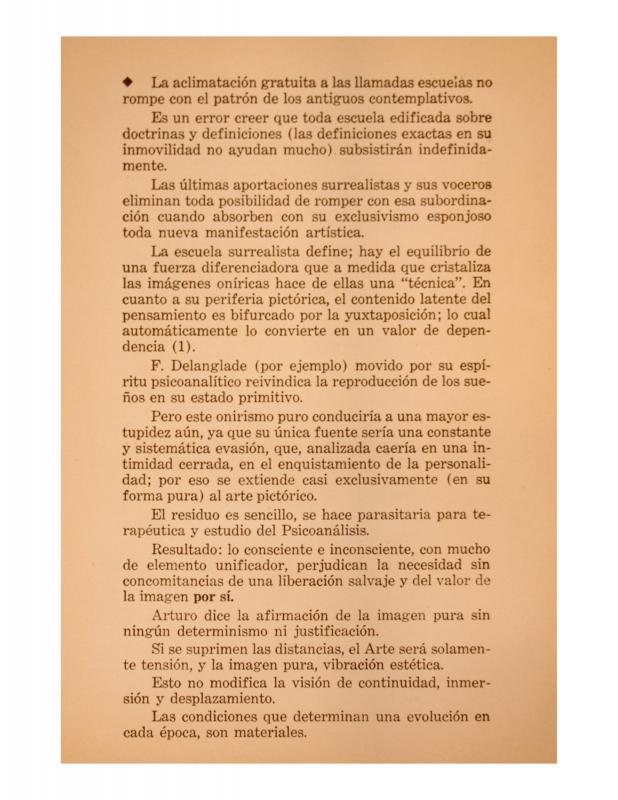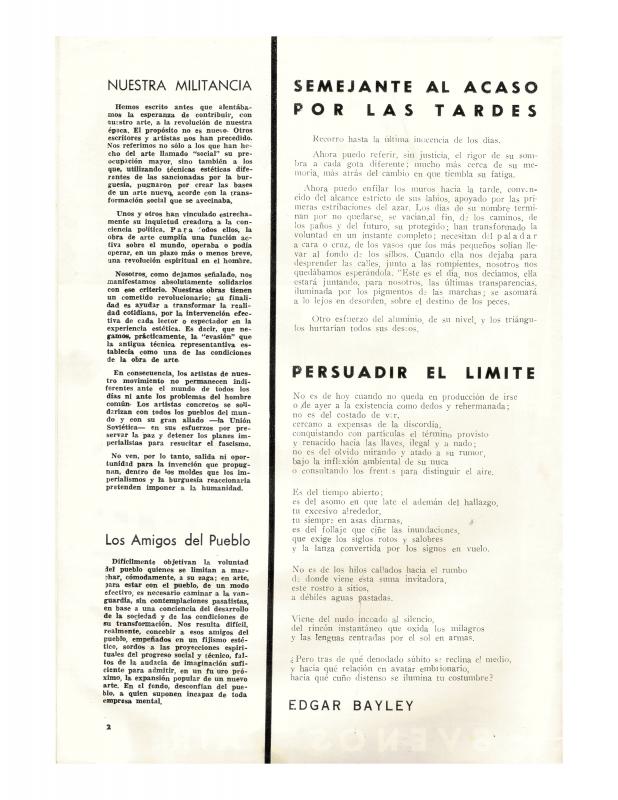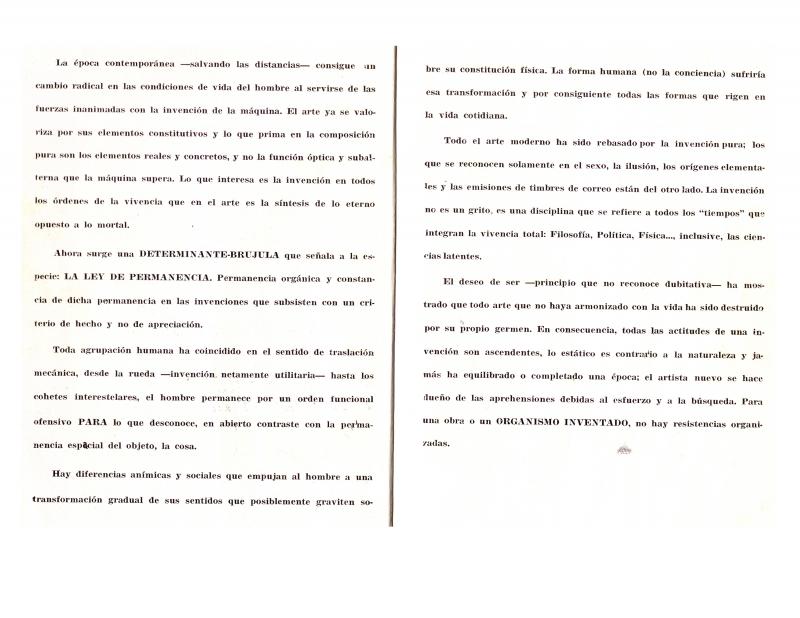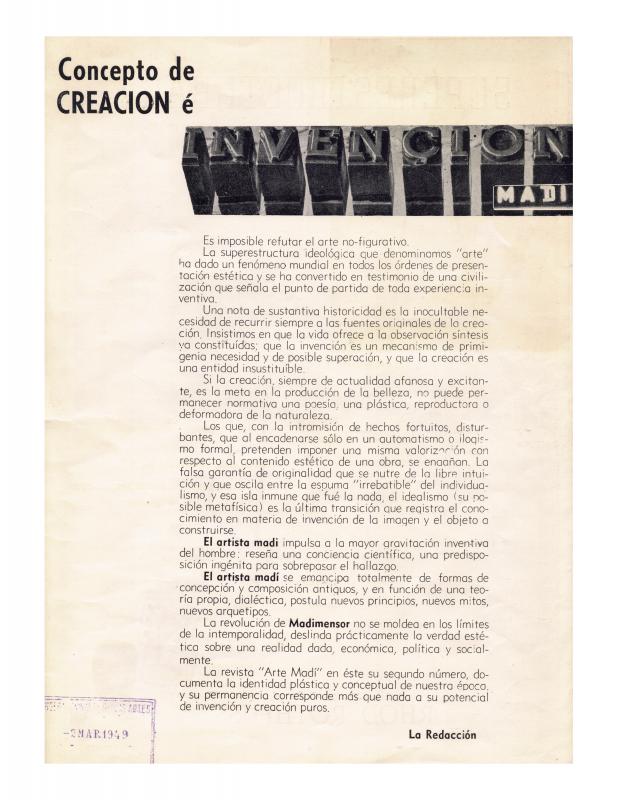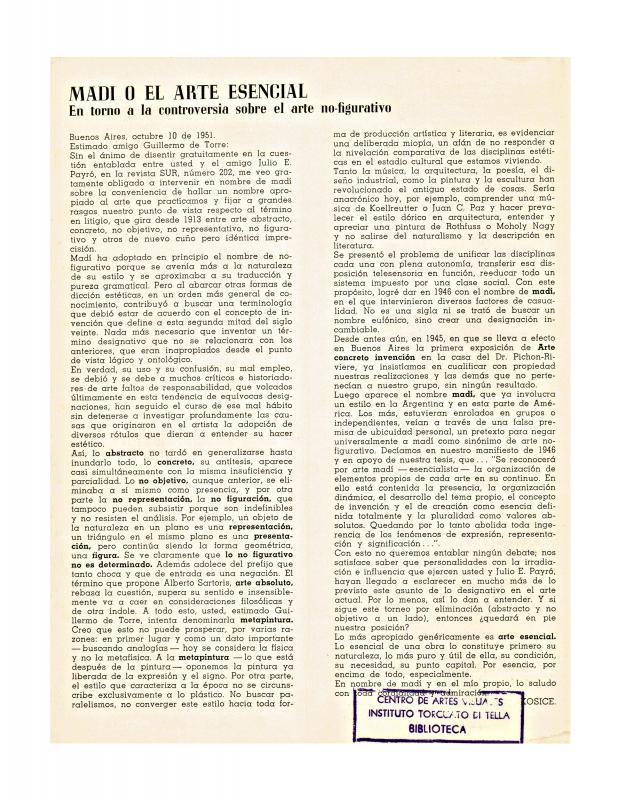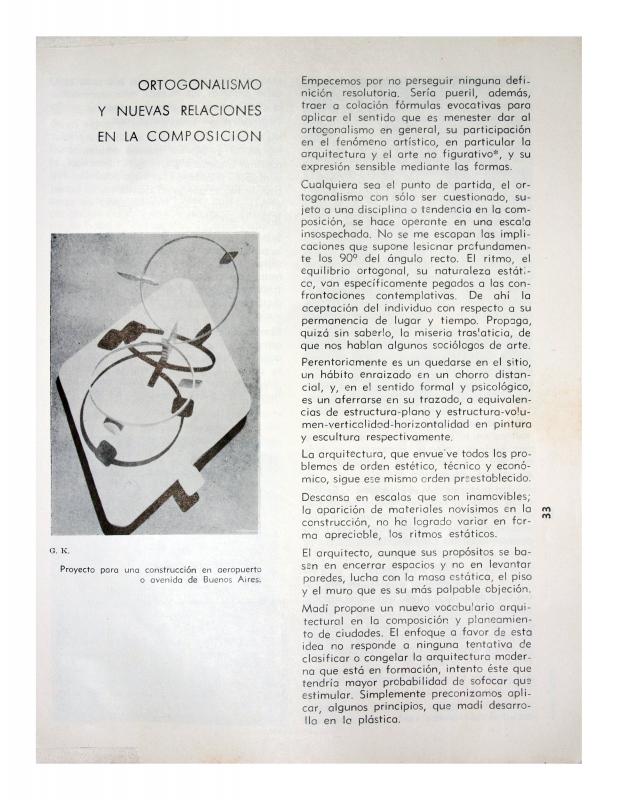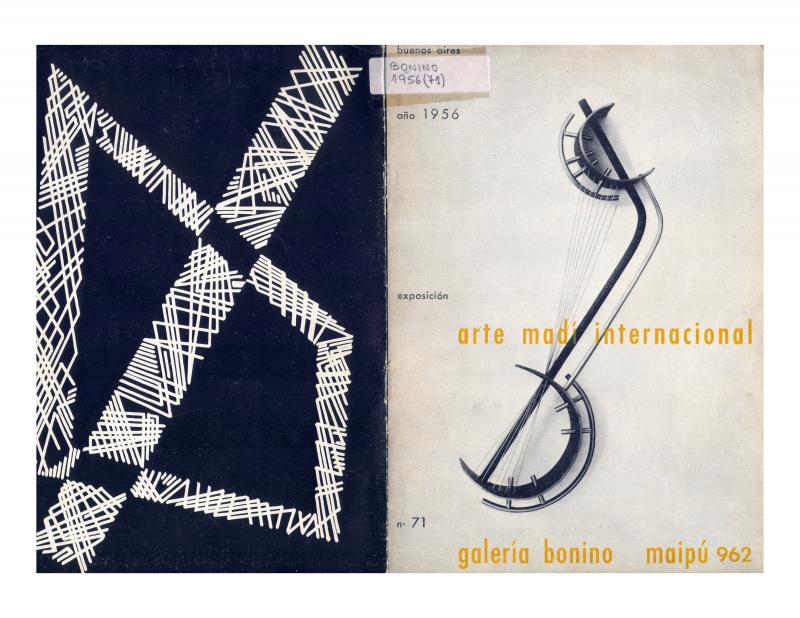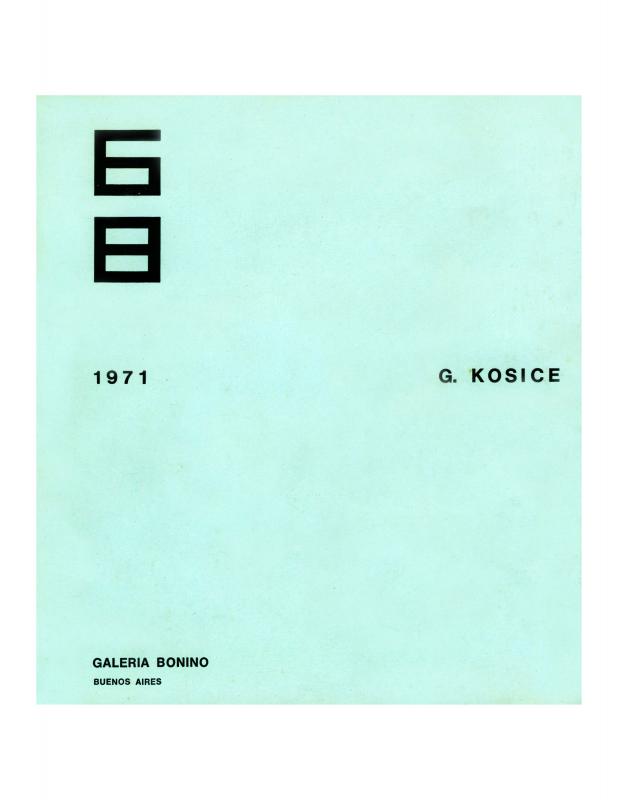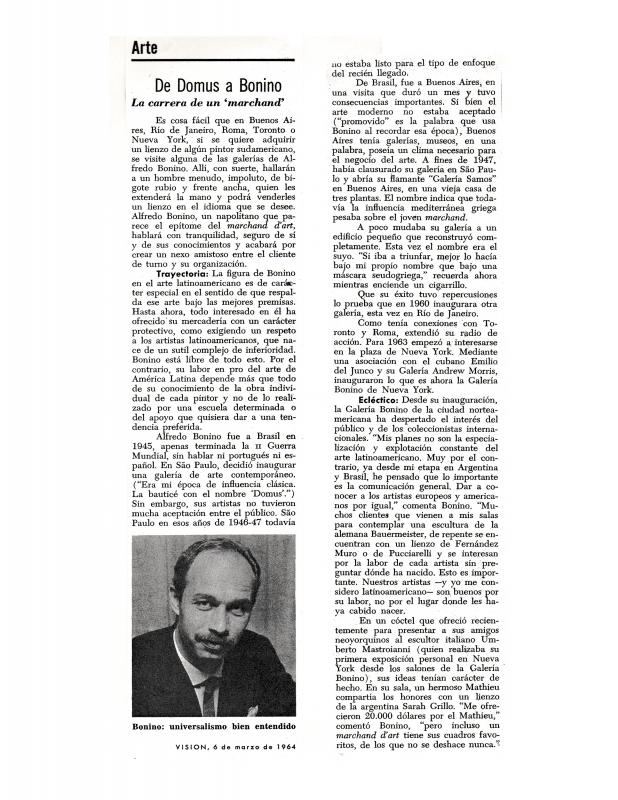Gyula Kosice (né Fernando Fallik, 1924) was born in Košice in present-day Slovakia, but has lived in Argentina since the age of four. A visual artist, poet, essayist, and visionary, he has been associated with some of the most influential Argentine avant-garde groups and movements. He served as a co-editor of Arturo magazine (1944) [For Kosice’s statement from Arturo, “La aclimatación artística gratuita a las llamadas escuelas…,” see the ICAA digital archive (doc. no. 729940).] and was a member of the association Arte Concreto—Invención (1945–46) (docs. no. 731671, 731530, 770319) and the Madí group (established in 1946) (docs. no. 743081, 731954, 731995, 731968, 742696, 732154, 743080). Indeed, in the interview reproduced here, the artist points both to Arturo and Madí as the important antecedents of The Hydrospatial City. Kosice is credited with the pioneering use of such materials as neon tubes, Plexiglas, water, and light, which positions him as one of the precursors of Kinetic art.
The Hydrospatial City [La ciudad hidroespacial]— Kosice’s magnum opus, which he began in 1946—was first unveiled in 1971 in the important gallery Bonino in Buenos Aires (doc. no. 1274910) [For the significance of the gallery, see “Arte: de Domus a Bonino: La carrera de un marchand,” (doc. no. 766378)]. The project came together as an expansive installation consisting of a series of twenty three-dimensional acrylic maquettes of space habitats, light boxes, and “Descriptive Memories” [Memorias descriptivas permutables]—that is, diagrams and texts that outline the living conditions the artist envisioned for the specific habitats. Its exhibition at the Planetarium of the City of Buenos Aires attests to the interest that Kosice’s proposal garnered in the Argentine scientific circles [See also (doc. no. 1274878).].

